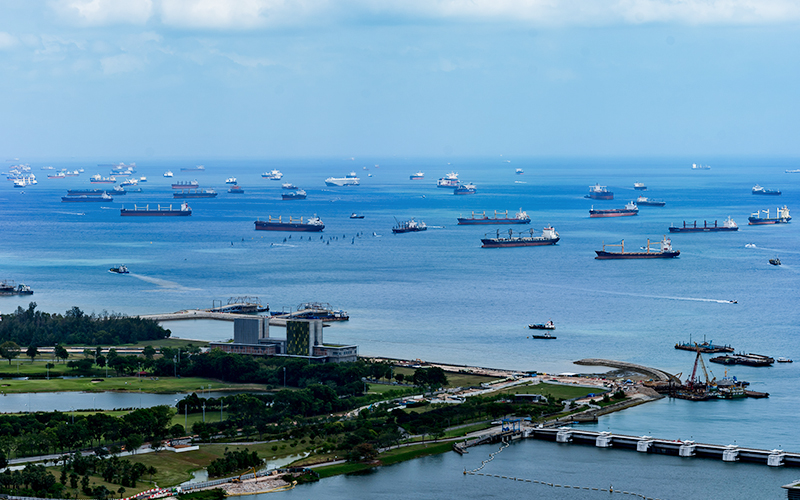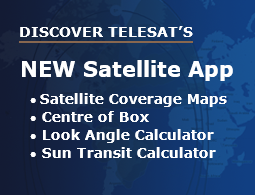Water covers 71 percent of our Earth’s surface. Since the dawn of maritime travel, being at sea presented communication challenges. For decades satellite operators and service providers have worked to address these challenges, from the “moving city” nature of cruise ships to the unique operational needs of merchant shipping. The advent of new Low-Earth-Orbit (LEO) constellations is revolutionizing connectivity at sea and ushering in an exciting time of change for this vital global market.
LEO constellations will deliver new functionality and solutions addressing several key issues impacting maritime.
Environmental, Social, and Governance (ESG)
ESG refers to the establishment of strategies and corporate practices that focus on improving environmental, social and corporate governance outcomes. The maritime industry is reacting to increased attention towards ESG and decarbonization from many stakeholders – regulators, financiers and cargo owners. Operations need to be more transparent than in the past. There is a requirement today for fact-based scientific disclosure of a company’s sustainability story.
Even minor improvements can make major impacts. Because 90 percent of global trade relies on shipping, the industry accounts for 2.9 percent of all greenhouse gas emissions. That’s more than aviation (2.4 percent), which tends to get far more attention.
Accurate and reliable satellite-based Position, Navigation and Time (PNT) information helps the maritime industry become greener through better efficiencies. Historically ships only updated their positional data once per day. Being connected at all times enables ships to always take the most efficient routes possible, reducing fuel consumption and pollution. This kind of data analysis is estimated to save up to 20-30 percent in shipping fuel consumption.
Digitalization
New LEO constellations are providing fast, reliable broadband access at speeds that support advanced data processing. This is allowing shipping companies to leverage new technologies to improve the efficiency and productivity of their investments. As recent headlines remind us, the global supply chain needs to supply a seamless flow of goods and services.
Technologies like the Internet of Things (IoT), Machine Learning, and Big Data analytics can now be applied to huge amounts of sensor-driven data. This ongoing analysis and improvement can enhance efficiencies, optimize operations, drive down costs, and reduce the environmental footprint of the maritime sector. These tools create connected, distributed networks that pave the way to Smart Shipping and (eventually) even autonomous vessels.
A stronger focus on worker’s rights and recruitment
The COVID-19 pandemic was disastrous for many of the 1.9 million seafarers. According to the International Maritime Organization (IMO), some 400,000 seafarers were stranded on board and unable to leave their vessels at the peak of the crisis in late 2020. An equally large number were stranded at home unable to travel to relieve their coworkers and make a living. Because of the professionalism and dedication of seafarers, vital goods such as medical supplies, food, and items critical to society, continued to flow.
This humanitarian crisis put renewed focus on workers’ rights in an industry already struggling to find and retain an essential workforce.
When physically isolated on a ship, Internet connectivity becomes even more essential than usual. In an update to the Maritime Labor Convention 2006, labor groups won the right to mandatory social connectivity for crews –including internet access. The issues of exactly how much access and whether sailors should pay for it remain contentious, however. Providing crew free access to home-like Internet access during their off-hours will hopefully become a part of a company’s published ESG policies.
New LEO connectivity delivers far more value from a cost per Megabit perspective and can help resolve these tensions. It’s in the interest of a shipping company to offer reliable Internet access, to help them attract the best talent and to keep their crew happy and healthy while at sea. Plus, some LEO constellations can deliver a huge amount of bandwidth on a specific cruise ship, providing passengers with access speeds as good or better than their terrestrial home networks.
Stronger security
Like every other industry maritime must consider stronger cybersecurity measures due to an increasingly dangerous online world. In 2017 the IMC issued Resolution MSC.428 (98), requiring all ships to include cyber risk management in their safety management systems, in accordance with the International Safety Management (ISM) Code. As of January 1, 2021, all ship owners had to comply to continue sailing anywhere worldwide.
Experts say progress has been made but more needs to be done on this front. According to a recent article in Bloomberg, the average number of breaches suffered by shipping companies went up from 2.7 in 2020 to 3.7 in 2021.
Telesat Lightspeed delivers
Telesat Lightspeed was designed as the first enterprise-class LEO network. This next-generation constellation focuses on three components that address the needs of the maritime market – security, performance, and accessibility.
Telesat’s system architecture and cybersecurity measures go far beyond the requirements of MSC.428 (98). Telesat has adopted the National Institute of Standards and Technology (NIST) Cybersecurity Framework and expects to meet the U.S. government standards for Transmission security (TRANSEC) and the Infrastructure Asset Pre-Assessment Program (IA-PRE).
Telesat Lightspeed is designed to deliver unprecedented performance and flexibility. The Phase 1 constellation will offer 10 Tbsp of capacity globally – more than the combined capacity of all geostationary satellites in orbit today. Sophisticated antennas on each Telesat Lightspeed satellite can dynamically focus up to 15 Gbps of capacity to a single location. This makes network congestion at busy seaports or onboard huge cruise ships a thing of the past. Maximum network efficiency means that all this capacity can be delivered at a more compelling cost per Megabit as well.
Telesat Lightspeed data processing occurs onboard the spacecraft. This allows for processing that supports Big Data analytics, and for maximum flexibility to route data anywhere across the globe. Flexible data routing is possible due to Optical Inter Satellite Links (OISLs), which create a global mesh network in space. This is critical for ships at sea to affordably connect passengers and crew back to the Internet.
It has not been smooth sailing for the past few years, but the forecast for maritime communications looks bright. Telesat Lightspeed is fulfilling the potential of satellite communications and erasing the performance gap when compared to land-based networks. For the first time in history, maritime travel will not necessitate a lesser-connected experience.




